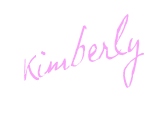I display the schedule in a pocket chart in my room for students to refer to throughout the day. The words I use in my scheduling chart are available at my Tpt store.
You can find a post about how I assess my struggling readers here.
Here is the post about my tops 5 tips for working with struggling readers. After this post, I had several emails about how I teach the difference between magic "e" and silent "e". The image below is the best way I could explain it.
Practicing at the "just right" level is critical for young readers (especially those who struggle). You can find a post about the books I use during my mini-lessons about "just right" books here.
A while ago, I also posted the leveled book lists that I use to help my parents find just right books for the children. You can view that post by clicking here. You can download the lists and the instructions that I made for using the Scholastic Book Wizard by visiting this post.
I would love to hear about the things other teachers are doing to help their struggling readers. Please consider linking up to share your ideas!
This linky party is being added to TBA's ultimate linky party! Visit TBA to check out other teaching related linky parties by clicking on the image below.

























Kimberly,
ReplyDeleteThank you for sharing your sample schedule and also for the magic e and silent e posters. These will help my little ones with those words that break the rules (some, come, have, etc.) I like your explanation better. :)
I love the Magic E/Silent E sign. I'm definitely going to use that in small group/whole group instruction for the new school year. Thanks for sharing!
ReplyDeleteAmanda
www.frolickingthroughfirst.blogspot.com
I am a Special Ed teacher - so always looking for new reading ideas, interventions and innovations. I am thrilled to have found you and look forward to connecting with you in the blogosphere.
ReplyDeleteI am now a follower thorugh RSS feeeds.
If you will look back a few days in my blog ( Sophie and Sadie's Scholarly Site- http://sophieandsadiesscholarlysite.blogspot.com/), I mentioned Lori Ozckus and her work with younger children in using hand signals and metacognition strategies to help comprehension. Her work along with Tanny MacGregor has really blown me away. My intermediate kids who still struggled responded well when I used their approaches in my reading classes. Right now I teach 4th grade social studies with our special ed teachers "pushing in," but we are still very literacy-based. I'm always looking for ways to include movement and manipulating objects or props to help in teaching.It just seems natural to me that if there is a way to make a connection to reading using those same movement and brain-based strategies, it will make learning less abstract, and kids will catch on much faster.
ReplyDeleteIts been quite easy and professionals in this regard must need to substantiate every possible stance in this regard for the future coverage. sentence grammar check
ReplyDelete